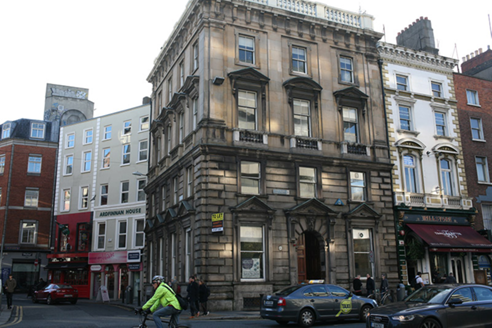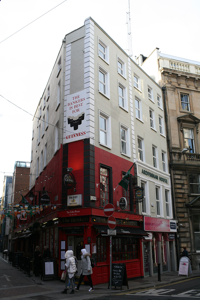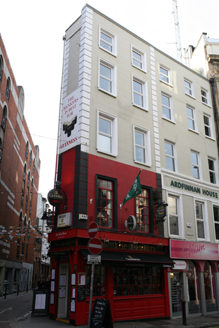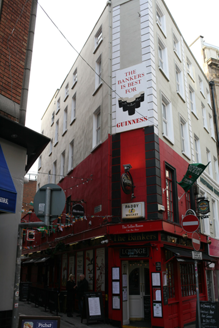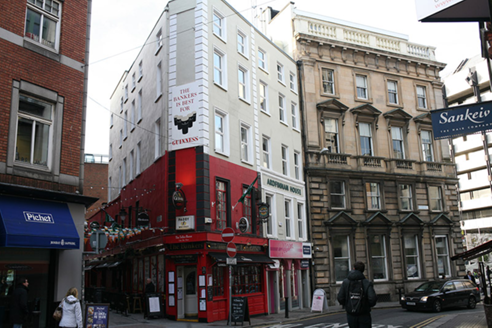Survey Data
Reg No
50910225
Rating
Regional
Categories of Special Interest
Architectural
Original Use
House
In Use As
Public house
Date
1730 - 1750
Coordinates
315776, 234018
Date Recorded
13/11/2015
Date Updated
--/--/--
Description
Corner-sited two-bay five-storey former house over concealed basement, built c. 1740, having skew-plan with chamfered corner to junction, four-bay side elevation onto Dame Lane, and recent pubfront to ground floor. Hipped artificial slate roof, on triangular plan, with stepped rendered chimneystack to apex at centre of plan, set behind lead-lined parapet wall with replacement uPVC hoppers and downpipes breaking through. Painted cement rendered walls throughout, with channel-rusticated render quoins to front elevation and to chamfered corner. Square-headed window openings, with applied architrave surrounds to front elevation, and having painted stone sills and replacement windows, timber to first floor of front elevation and uPVC elsewhere. Plain square-headed door opening to west end of side elevation. Possibly built as pair with No. 17 Trinity Street.
Appraisal
This building and its neighbour (No. 17) appear to date from the early eighteenth century, as is evident in the stepped chimneystack at the centre of plan and the general façade proportions. Although it has had much original fabric removed, the unusual footprint and vertical emphasis make it an unusual early survival, adding to the understanding of the historic development of this street and the older building typology of the centre of Dublin. Laid out in 1728, Trinity Street was named after Trinity Hall, a public free school erected in 1616.
